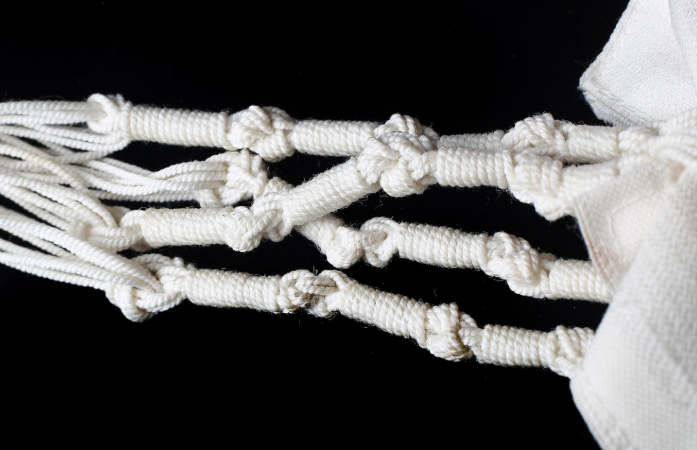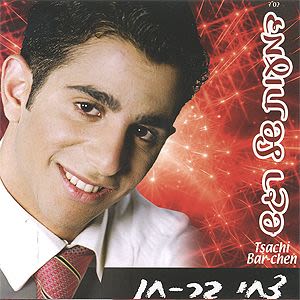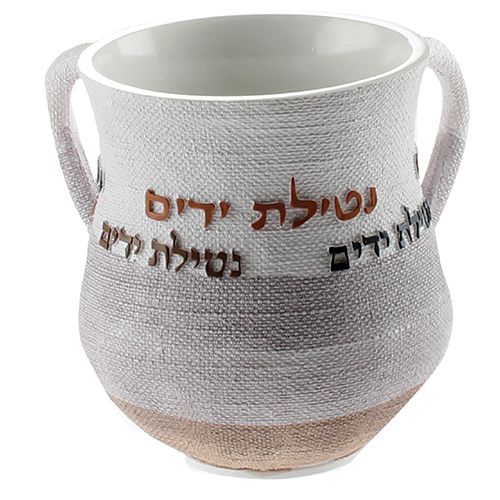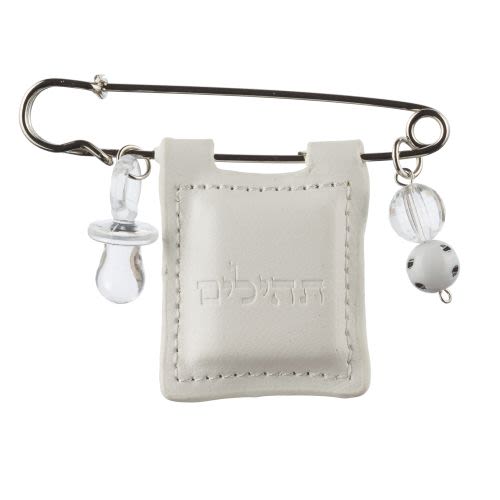
Tefillin – Breslov The Way It Is, Part 2
Reb Ephraim b’Reb Naftoli discusses the widespread custom of reciting “Le-shem yichud...” prior to reciting the blessing over the Tefillin. He also...

Le‘ilui nishmat Leib ben Yitzchak Ya’akov Sears, a”h – Yartzeit: 30 Shevat, Rosh Chodesh Adar
Le’ilui nishmat Yosef ben Shmuel Zeitlin, a”h –
Yartzeit: 18 Menachem Av
We continue with our new series of minhagim and hanhagot tovot of Breslov. We invite you to peruse our previous entries by accessing our archives.
Tefillin (continued)
The kesher shel yad should be made according to minhag Sefard, so that one winds the strap away from oneself. (This seems to be a universal Chassidic custom, with the exception of the Gerrer Chassidim, who wind the strap toward themselves, according to minhag Ashkenaz.)
* * *
Reb Ephraim b’Reb Naftoli discusses the widespread custom of reciting “Le-shem yichud…” prior to reciting the berakhah over the Tefillin. He also mentions the additional nusach that some recite at the end of this text: “Hareini mani’ach ha-tefillah shel yad kedei le-havei kol ha-AKUM tachat yad Shekhinah Tata’ah…” (See Likkutei Even, p. 49. Variants of this nusach are found in Zohar Chadash, 18c; Siddur ARIChemdat Yisrael; Sefer Matzat Shemurim; and various old Chassidic siddurim, such as Siddur Tefillat Yesharah-Berditchev. The Tzanzer Rov recited it, as did the Minchat Elazar; see Darkei Chaim ve-Shalom 46 and Divrei Torah II, 6. It is also mentioned by Rabbi Shalom of Kaidinov, Mishmeret Shalom 6:3)
* * *
Both Rabbi Avraham Sternhartz and Rabbi Gedaliah Kenig put on the tefillah shel yad while sitting, following the view of the Zohar and Ari zal. This is Rabbi Elazar Kenig’s custom, as well.(See Zohar III, 120b; Sha’ar ha-Kavannot, Drushei ha-Tefillin, Drush 5; ibid. Drushei Kriat Shema’, Drush 6; Pri Eitz Chaim, Sha’ar ha-Tefillin, chap. 10, beginning. Most Sefardim today follow this custom. However, for Ashkenazim, it is the subject of much debate; see RaMA on Shulchan Arukh, Orach Chaim 25:11 with commentaries. Darkei Chaim ve-Shalom 58 states that the Minchat Elazar put on the tefillah shel yad while sitting. In his Ot Chaim 25:15 and hashmatot, he mentions that in chutz la’aretz, he did so be-tzinah, but in Eretz Yisrael, where most people do likewise, he did so openly.)
* * *
Concerning putting on the tefillah shel yad while sitting, Rabbi Gedaliah Kenig once told Rabbi Elazar Kenig, when the latter was still a bochur in his late teens, “First study the deeper meaning of this custom. Once you have understood it, then you may practice it” (Since he permitted others to do so without this precondition, it would seem that this instruction was meant only for Rabbi Elazar Kenig).
* * *
One should cover the tefillah shel yad with one’s talit while reciting the blessing (Sha’ar ha-Kavannot, Drushei ha-Tefillin, Drush 5).
* * *
Rabbi Avraham Sternhartz recited separate berakhot on the tefillah shel yad and the tefillah shel rosh. After saying the second berakhah and adjusting the tefillah shel rosh, Rabbi Gedaliah recited “Borukh shem kevod…” Rabbi Elazar Kenig presumes that this was Rabbi Avraham Sternhartz’s minhag, as well. (This is the subject of debate among the early authorities. Rav Hai Gaon, RIF, RaSHI, RaMBaM, and RaSHBaH advocate making one berakhah; while Rabbenu Tam, SeMaG, the Rosh, and the Tur advocate making two berakhot. Common Ashkenazic practice is to recite two berakhot, according to the ruling of RaMA, Orach Chaim 25:5. This position is also supported by Zohar Chadash, Tikkunim, 119b; Midrash Tanchuma, Bo; Tosefot, Menachot 36a, in the name of Rabbenu Tam and Shemusha Raba. This was also the minhag of the Baal Shem Tov according to Shulchan ha-Tahor [Komarno], Tefillin 25:4; ibid. Ze’er Zahav 3; likewise, Rabbi Pinchos of Koretz, as stated in Imrei Pinchos [Bnei Brak 2003] vol. I, Sha’ar Seder ha35 Yom 33. However, according to Beit Rizhin, this was one of the few minhagim of the Baal Shem Tov that the Maggid of Mezeritch did not keep. The Beit Yosef, ad loc., rules that one should say only one berakhah unless one makes an interruption between donning the tefillah shel yad and tefillah shel rosh. This is the common Sefardic practice, which is supported by the view of the ARI zal; see Rabbi Chaim Vital, Sha’ar ha-Kavannot, Drushei Tefillat ha-Shachar, Drush 3, beginning. The ARI zal also explains the sod of the Ashkenazic minhag. Shnei Luchot ha-Brit, Chullin, s.v. “U-miyad,” similarly advocates making only one berakhah. Most Chassidim recite two berakhot; however, like the Maggid of Mezeritch, some recite only one, e.g. the communities of Chabad, Boyan, etc.)
* * *
Rabbi Avraham Sternhartz did not make three windings above the elbow to form a shin. Rather, the first winding below the tefillah shel yad should be below the elbow. In total there should be six full windings and two half windings, one before and one after the six. A shin is formed on the hand. Rabbi Elazar Kenig added that given Rabbi Avraham Sternhartz’s family customs and his fidelity to them, it would seem that this was Reb Nosson’s minhag, too. (This is consistent with Sha’arei Teshuvah on Shulchan Arukh, Orach Chaim 27:8, hagahah 15, and Sha’ar ha-Kavannot, Drushei ha-Tefillin, Drush 5, 10b. By contrast, Pri Eitz Chaim, Sha’ar ha-Tefillin 10:14, states in the name of “chaveirim,” i.e., students of the ARI other than Rav Chaim Vital, that one should make a shin on the upper arm above the elbow. However, the author of Sha’arei Teshuvah points out that this does not have the authority of Rav Chaim Vital’s custom. Shulchan ha-Tahor [Komarno] 27:2 opines that the minhag of making a shin on the upper arm only applies to one who wraps the Tefillin of Rashi and Rabbenu Tam at the same time. However, other Chassidim have different traditions concerning this. For example, according to the Trisker Maggid, the Baal Shem Tov made a shin on the upper arm; see Sefer Baal Shem Tov, Va-etchanan 84. This custom is also mentioned by the Baal Shem Tov’s disciple, Rabbi Moshe of Dalina, Seraf Pri Eitz Chaim, Sha’ar ha-Tefillin, chap. 5 [73b]; other Chassidic sources for making a shin on the kiboret include Imrei Pinchos [Bnei Brak 2003] vol. I, Sha’ar Seder ha-Yom 32 (although Rabbi Pinchos of Koretz made the shin with only two windings); Siddur ha-Rav Baal ha-Tanya; Minhagei Karlin-Stolin; Mishmeret Shalom [Kaidinov] 4:4; Darkei Chaim ve-Shalom [Munkatch], 48, et al.)
* * *
Rabbi David Sears:: While working on these minhagim, I asked Rabbi Elazar Kenig: “For decades I have been winding the retzu’ah so that I make a shin on the kiboret. Should I change my minhag?” He replied without hesitation, “Why?” – meaning that this was not in the category of those few minhagim that a Breslover Chassid should observe without fail. This is an example of Rabbi Elazar Kenig’s words quoted above, “The main thing is yirat Shomayim.”
To be continued…
(With permission from The Breslov Center for Spirituality and Inner Growth http://www.nachalnovea.com)













Tell us what you think!
Thank you for your comment!
It will be published after approval by the Editor.